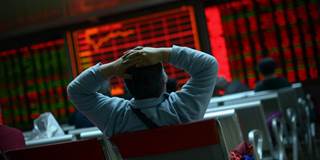Since the 2008 financial crisis, economic orthodoxies have been collapsing left and right. Under conditions of low unemployment, elusive inflation, weak productivity growth, and high profitability, economists in advanced economies may need to go back to the drawing board.
LONDON – Though economics aspires to the rigor of the natural sciences, at the end of the day it is still a social science. At no point in the past 40 years has this been more evident than it is now.
For decades, conventional macroeconomic analysis has rested on the edifice of the Phillips curve, which asserts a clear tradeoff between unemployment and inflation: when the unemployment rate falls below a certain point, inflation must rise. But this assumption has not been borne out in the decade since the 2008 financial crisis. In both the United Kingdom and the United States, for example, the unemployment rate is historically low, yet inflation remains weak.
Or consider monetary policy. Even after years of quantitative easing (QE) and ultra-low interest rates, central bankers in the advanced economies – particularly the eurozone – have continued to undershoot their inflation targets. Economists have also had to question long-held assumptions about downward nominal wage rigidity, an artifact of the 1960-70s, when organized labor was much stronger. Clearly, the idea that employees will always resist cutting wages (or workers’ hours) no longer applies.

LONDON – Though economics aspires to the rigor of the natural sciences, at the end of the day it is still a social science. At no point in the past 40 years has this been more evident than it is now.
For decades, conventional macroeconomic analysis has rested on the edifice of the Phillips curve, which asserts a clear tradeoff between unemployment and inflation: when the unemployment rate falls below a certain point, inflation must rise. But this assumption has not been borne out in the decade since the 2008 financial crisis. In both the United Kingdom and the United States, for example, the unemployment rate is historically low, yet inflation remains weak.
Or consider monetary policy. Even after years of quantitative easing (QE) and ultra-low interest rates, central bankers in the advanced economies – particularly the eurozone – have continued to undershoot their inflation targets. Economists have also had to question long-held assumptions about downward nominal wage rigidity, an artifact of the 1960-70s, when organized labor was much stronger. Clearly, the idea that employees will always resist cutting wages (or workers’ hours) no longer applies.